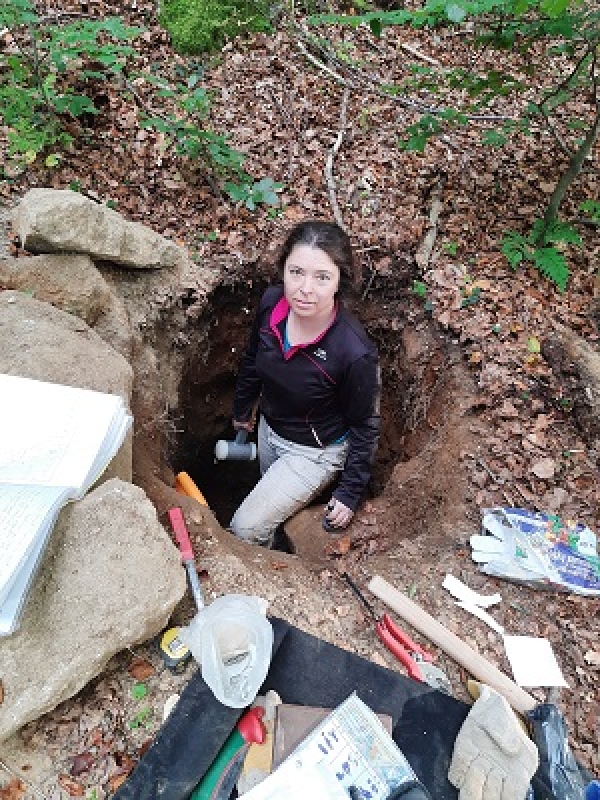Old-growth, or primeval, forests are those that have remained intact and untouched by human action such that, in them, natural disturbances are the main forces shaping their structures and compositions. In October 2017 the BoubinPrimeval Forest, one of the oldest such reserves in Europe, was hit by CycloneHerwart, andthe forest's structure was affected, with hectare-sized blowdowns, but the densest areas of the forest were largely preserved. What was the reason for this apparently haphazard tree fall pattern?
To understand why some trees are more vulnerableto falling than others, Andrea Román― a researcher with the María de Maeztu Unit of Excellence at the Department of Agronomy of the University of Córdoba (DAUCO), who conducts her research in the Agricultural Hydrology and Hydraulics group― worked together with the Blue Cat Team of the Department of Forest Ecology at The Silva Tarouca Research Institute in the Czech Republic to identify the key factors behind tree mortality dynamics after severe windstorms affecting this type of forest.
Using a tree census, spatially explicit tree data, geostatistics, dendrochronology techniques, and soil hydromorphism analysis, they studied the spatial and temporal patterns of disturbance, determining that tree susceptibility to decline is driven by edaphology. Tree death was, therefore, concentrated in areas characterized by high water saturation.
The distribution of tree populations in the earth according to the trees' water needs "resulted in a 'selective' impact of the Herwart storm, which affected mainly Norway spruce (Píceaabiesand Abies alba), indicating a close relationship between soil, species and disturbance," explained the researcher.
Regarding the factors determining trees' resistance to the storm, this study supports the hypothesis that slow initial growth (even with stages of growth suppression by events such as drought) provides a mechanical advantage to trees in terms of their wind resistance. Conversely, trees with rapid growth rates are more prone to having their roots colonized by pathogens and, thus, predisposed to disturbances.
The ideal situation in forests of this type,having slow-growing species (spruce) and fast-growingones(beech), is stands of trees featuring heterogeneous vertical and horizontal structures; a situation that, it has been proven, gives the trees greater protection from falling than stands of trees of the same height; that is, a heterogeneous canopy (roof formed by the crowns) is advantageous. "The presence of old, slow-growing trees with high-density wood seems to increase the resistance of the entire stand to windstorms," emphasized Román.
For forest management strategies, this study stressed the importance of incorporating this knowledge of natural processes into silvicultural management systems, taking into account factors that can help reduce windstorm damage to landscapes.
Vašíčková, I.; Šamonil, P.; Kašpar, J.; Román-Sánchez, A.; Chuman, T.; Adam, D. Dead or Alive: Drivers of Wind Mortality Initiate Multiple Disturbance Regime in a Temperate Primeval Mountain Forest. Forests 2021, 12, 1599. https://doi.org/10.3390/f12111599. https://doi.org/10.3390/f12111599


